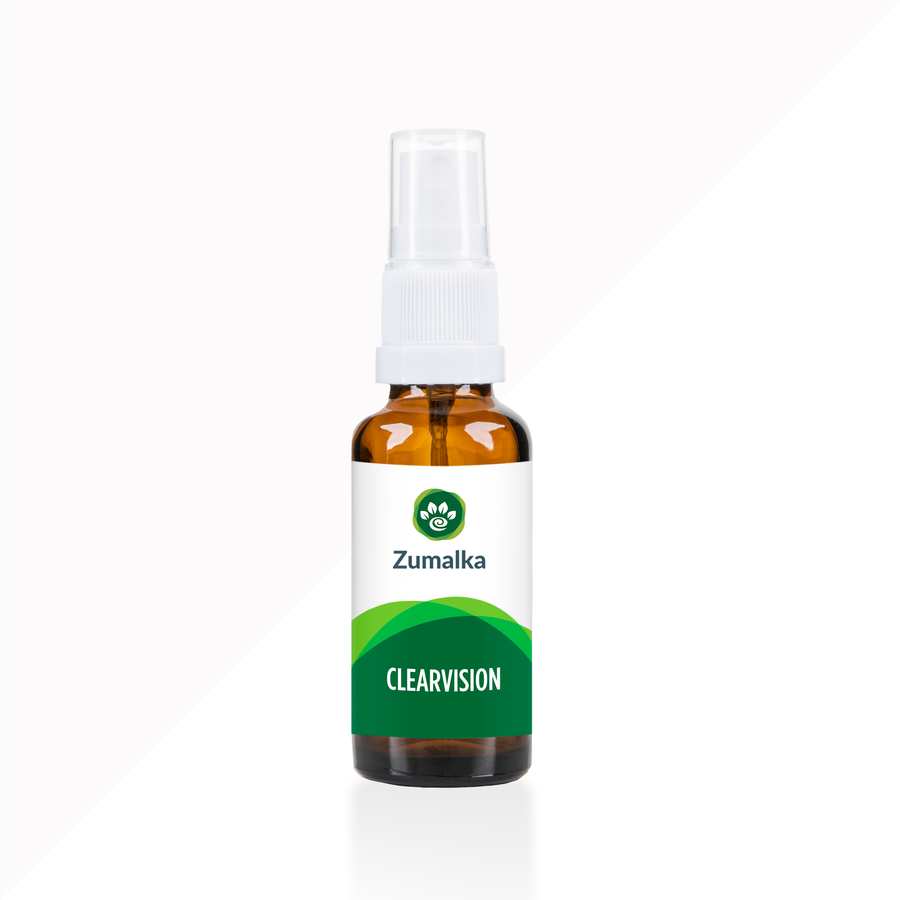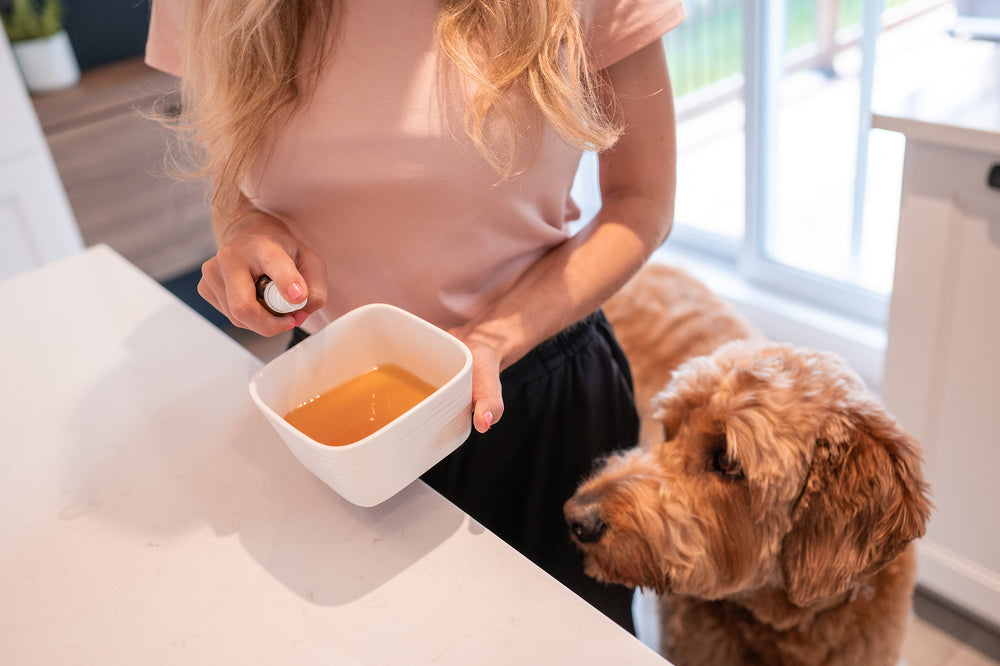Vet-Verified: 3 Lesser-Known Causes of Cataracts in Dogs You Should Know
Imagine this: You're enjoying a routine play session with your dog when you notice them bumping into objects or hesitating before jumping off the couch. You also see that their eyes appear cloudy. Could these be signs of cataracts in dogs?
In this article, we'll explore everything you need to know about canine cataracts. Beyond uncovering some of the lesser-known causes, we'll discuss how cataracts develop, their clinical signs, available treatment options, and other valuable insights to help you better understand this condition.
What Exactly are Cataracts in Dogs?
A canine cataract occurs when a dog’s lens becomes cloudy or opaque, hindering its ability to focus light on the retina. Since a clear lens is essential for sharp vision, any cloudiness disrupts light transmission, leading to blurred vision and, in severe cases, blindness.
Understanding cataracts in dogs is essential, as they commonly cause vision loss and blindness in canines. Beyond affecting your pet’s quality of life, cataracts can lead to painful complications such as inflammation or glaucoma. Fortunately, this condition is treatable with proper care.
What are the Common Causes of Cataracts in Dogs?
Like other canine health issues, cataracts do not occur randomly. Several key factors contribute to their development, including:
Hereditary or genetic predisposition
Genetics is the leading cause of canine cataracts, with many breeds being predisposed to the condition. These cataracts may be present at birth or develop later in life. In many cases, irresponsible breeding practices—such as those in puppy mills—contribute to their occurrence.
Diabetes mellitus
Diabetes in dogs often leads to the accumulation of sorbitol, which causes the lens to swell and develop cataracts. Most diabetic dogs experience cataract formation within a year of diagnosis. If left untreated, this can eventually result in blindness.
Old age
As dogs age, physiological changes in their bodies make them more susceptible to cataracts. Their immune systems weaken over time, increasing their vulnerability to various health issues. However, age-related cataracts tend to progress slowly.
Eye injury or trauma
Nicks, cuts, and wounds to the eyes can trigger cataracts, as such trauma often leads to inflammation that, if untreated, may result in cataract formation. Even minor eye injuries can contribute to this condition.
Diseases affecting the eyes
Interestingly, cataracts in dogs can be triggered by underlying eye diseases. Examples include lens luxation (lens dislocation), progressive retinal atrophy (a retinal disease), glaucoma (increased eye pressure), and uveitis (eye inflammation).
What are the Lesser-Known Causes of Cataracts in Dogs?
Now that we’ve covered the common causes of canine cataracts, let’s look at some lesser-known ones. You might unknowingly be making these mistakes, too! They include:
Your dog’s diet may lack essential amino acids or contain too much sugar.
Research shows that a deficiency of essential amino acids, such as arginine and phenylalanine, is linked to cataract formation in dogs. These amino acids are often missing from certain milk alternatives for young pups.
Moreover, research indicates that excessive sugar in a dog’s diet, particularly galactose, can trigger cataracts due to osmotic stress and swelling of the lens fibers. High sugar intake can also increase a dog’s risk of developing diabetes mellitus.
Your dog may have low blood calcium levels.
Research suggests that low blood calcium levels may contribute to cataract development in dogs. This happens when calcium levels in the aqueous humor of the eye drop, affecting lens metabolism. Studies also show a link between blood calcium and eye calcium levels, indicating that prolonged calcium deficiency could increase the risk of cataracts.
Your dog may be exposed to excessive radiation or UV light.
Too much exposure to near-UV light (300–400 nm) can lead to changes in the eye that may contribute to cataracts. It affects tryptophan, a key component in the lens, causing proteins to clump together. Over time, this can make the lens cloudy and affect your dog's vision. Similarly, excessive exposure to radiation or toxic substances can also trigger this effect.
How Do Cataracts Develop in Dogs?
In a healthy eye, the clear lens allows light to pass through and focus on the retina, ensuring sharp vision. However, when cataracts develop, the lens becomes cloudy, blocking or scattering light and making it harder for dogs to see.
This differs from nuclear sclerosis, a normal age-related change that causes a bluish haze in the lens but typically doesn’t lead to blindness. Because cataracts and nuclear sclerosis can appear similar, it’s best to have a veterinarian examine your dog’s eyes for an accurate diagnosis and appropriate care.
What are the Signs and Symptoms of Cataracts in Dogs?
Now, let's explore the clinical signs of cataracts in dogs. If you notice any of the following symptoms, be sure to consult your veterinarian or a pet homeopathy specialist for guidance:
Cloudiness or opacity in the eyes
- A milky-white, gray, or bluish tint in the pupil
- A crystalline or sparkly appearance in the lens
- Reduced or absent eye shine in nighttime photos
Sudden changes in behavior or vision-related issues
- Bumping into walls or furniture
- Hesitation or uncertainty around stairs
- Difficulty locating food and water bowls
- Increased clumsiness
- More cautious or hesitant movements
- Staying closer to the owner for guidance
- Struggling to track or catch thrown objects
Other key clinical signs
- Redness or inflammation in or around the eye
- Frequent squinting or pawing at the eyes
- Rubbing the face or head against the floor or furniture
- Bulging of the eye
- Increased thirst and urination (if linked to diabetes)
How Do Veterinarians Diagnose Cataracts in Dogs?
Diagnosing cataracts in dogs starts with a thorough eye exam, where the veterinarian reviews your dog's medical history and any symptoms you've noticed. They use a bright light, magnifying lenses, and an ophthalmoscope to examine the eye’s internal structures, often dilating the pupils for a clearer view of the lens.
Additional tests, such as slit lamp biomicroscopy, tonometry to check for glaucoma, and fluorescein staining to assess the cornea, help rule out other eye conditions. Blood work and urinalysis may also be performed to check for underlying issues like diabetes.
In more complex cases, a veterinary ophthalmologist might conduct advanced tests, such as an electroretinogram or ocular ultrasound, to determine the best treatment plan.
Can Cataracts in Dogs Be Treated Naturally?
Yes, natural approaches can help slow the progression of cataracts in dogs and support overall eye health. One option to consider is using CLEARVISION OPTIMAL.
This premium natural kit is designed to provide full-spectrum support in slowing the progression of cloudy lenses. It also helps maintain overall eye health and supports the visual system and eyesight.
The CLEARVISION OPTIMAL KIT contains the following:
- CLEARVISION is a high-quality homeopathic formula designed to support your pet’s eye health. It helps combat blurred vision, dull eye pain, age-related eye damage, and even excessive tearing.
- TONICPET #1 is a natural supplement that helps promote strong, healthy eye tissues. It supports the overall eye system to help maintain clear vision.
- TONICPET #5 and TONICPET #12 work together to support a healthy mucous membrane in the eye, promoting overall eye health.
How Do Veterinarians Treat Cataracts in Dogs?
The gold standard for treating cataracts in dogs is surgery, specifically phacoemulsification, where the cloudy lens is broken down and removed under general anesthesia.
In most cases, an artificial intraocular lens (IOL) is implanted to restore clear vision, but even without an IOL, dogs can still regain functional sight. Surgery has the highest success rate (80–90%) when performed before the cataract fully matures.
For dogs not candidates for surgery, treatment focuses on reducing inflammation with anti-inflammatory eye drops, while aldose reductase inhibitors may help slow the progression of diabetic cataracts.
Although non-surgical options can’t restore vision, creating a safe and familiar environment can help blind dogs adjust and live comfortably.
What Happens If Cataracts in Dogs Are Left Untreated?
If not treated, cataracts can gradually worsen, eventually blocking light and leading to vision loss or blindness.
As cataracts worsen, the breakdown of lens proteins can lead to lens-induced uveitis, a painful eye inflammation. If left unmanaged, this may progress to glaucoma—an increase in eye pressure that is particularly difficult to control in diabetic dogs.
Other serious complications include lens luxation, where the lens shifts out of position, and retinal detachment, both of which can lead to sudden and permanent blindness. In some cases, cataracts may dissolve on their own, but this can trigger severe inflammation, causing further damage to the eye.
What Should You Expect from Cataract Surgery for Your Dog?
Before cataract surgery, a veterinary ophthalmologist will conduct a detailed eye exam, which may include tests like an ocular ultrasound and electroretinogram (ERG) to check the health of the retina.
During the surgery, which is performed under general anesthesia, small incisions are made in the eye. High-frequency vibrations are then used to break up and remove the cloudy lens, and in most cases, an artificial intraocular lens (IOL) is inserted to restore vision.
After surgery, dogs usually stay in the hospital for a few days and need careful post-operative care, including wearing an E-collar, receiving multiple daily eye drops, and following strict activity restrictions.
Although the procedure has a high success rate, complications like inflammation, glaucoma, or infection can occur. In rare cases, vision loss or eye removal may be necessary. Regular follow-up exams are crucial to monitoring healing and ensuring long-term eye health.
What are the Costs Associated with Cataract Treatment for Dogs?
The cost of cataract treatment for dogs can differ based on location, the severity of the condition, and any additional medical needs.
An initial exam with a veterinary ophthalmologist typically costs between $200 and $300, while diagnostic tests like an ERG, ultrasound, and blood work can add another $1,000 to $1,200.
Cataract surgery for both eyes typically costs between $2,700 and $4,000, with an average total expense of around $3,500. Pet insurance may help cover some of these costs, making treatment more manageable for pet owners.
Is It Possible to Prevent Cataracts in Dogs?
Yes, there are several ways to help prevent cataracts in dogs. These include:
- Genetic screening (eye certification by a veterinary ophthalmologist) before breeding
- Avoiding the breeding of dogs with cataracts or other eye conditions
- Managing underlying health issues, such as diabetes
- Protecting your dog's eyes from injury
- Seeking veterinary care for any eye injuries, even minor ones
- Scheduling regular veterinary eye exams
- Being proactive about your dog's overall eye health and wellness
Consulting your veterinarian or a pet homeopathy expert is essential for preventing cataracts and other eye issues that could affect your dog’s vision.
How Do You Care for a Dog with Cataracts or Blindness?
Dogs are remarkably resilient and can adjust well to vision loss, especially when it occurs gradually. To help them feel secure, it's best to keep their home environment consistent and avoid rearranging furniture.
Using verbal cues and gentle touch can help provide extra guidance. With love, patience, and a few adjustments, blind dogs can still enjoy a happy and fulfilling life.
FAQs
How do you treat cataracts in dogs?
Cataracts in dogs are treated with surgery, specifically phacoemulsification, to remove the cloudy lens and restore vision. Non-surgical management includes anti-inflammatory eye drops and creating a safe environment for blind dogs. Using CLEARVISION OPTIMAL can also help.
How long can dogs live with cataracts?
Dogs can live a normal lifespan with cataracts, but untreated cases may cause vision loss or glaucoma. Regular vet checkups, proper care, and consulting a pet homeopathy specialist help maintain their quality of life.
Are dogs in pain with cataracts?
Cataracts aren’t painful, but they can cause discomfort if complications like inflammation or glaucoma develop. Regular vet checkups, consultations with a pet homeopath, early treatment, and proper care help prevent pain and support your dog’s eye health.
Should my 12-year-old dog have cataract surgery?
Cataract surgery for a 12-year-old dog depends on overall health, eye condition, and quality of life. A veterinary ophthalmologist can assess risks and benefits to determine the best treatment option.
How do you treat cloudy eyes in dogs?
Treating cloudy eyes in dogs depends on the cause. Options include cataract surgery, anti-inflammatory eye drops, and managing conditions like diabetes. A veterinarian or pet homeopathy expert can determine the best treatment plan.
What is a home remedy for dog eyes?
A gentle home remedy for dog eye health includes wiping with a warm, damp cloth and using saline solution for minor irritation. Always consult a veterinarian or pet homeopathy expert before trying home treatments.
How to tell if your dog has cataracts or glaucoma?
Cataracts cause cloudy eyes and vision loss, while glaucoma leads to redness, pain, and increased eye pressure. A veterinary exam, including eye pressure tests and lens evaluation, is essential for an accurate diagnosis.
Can I use human eye drops on my dog?
Avoid using human eye drops on your dog without veterinary guidance, as some ingredients may be harmful. Always consult a veterinarian to choose the safest and most effective eye treatment for your dog’s condition.
How to prevent canine cataracts?
Prevent canine cataracts by scheduling regular eye exams, managing diabetes, protecting eyes from injury, and avoiding breeding dogs with genetic predisposition. A veterinarian or pet homeopathy expert can recommend additional preventive care.
How do dogs become diabetic?
Dogs can develop diabetes due to genetics, obesity, pancreatitis, or hormonal imbalances, leading to insulin resistance or deficiency. Regular vet checkups, a balanced diet, and maintaining a healthy weight help lower the risk.
Can a dog be blind without cataracts?
Yes, dogs can go blind without cataracts due to glaucoma, retinal disease, diabetes, or neurological conditions. A veterinarian can diagnose the cause and recommend the best treatment or management options.
How can I help my dog with cataracts?
Help your dog with cataracts by scheduling regular vet checkups, considering surgery, using prescribed eye drops, and creating a safe environment. A veterinarian or pet homeopathy expert can recommend the best care plan.
How to test a dog's eyesight at home?
Test your dog’s eyesight at home by observing for signs of vision loss, using obstacle courses, or performing a menace reflex test. Consult a veterinarian for a thorough eye exam if you notice any issues.
At what age do dogs get cataracts?
Dogs can get cataracts at any age, but they are most common in older dogs and certain breeds. Hereditary cataracts may appear early, while age-related cataracts typically develop after six years.
Can vets fix dogs' cataracts?
Yes, vets can treat canine cataracts with surgery. A veterinary ophthalmologist removes the cloudy lens and may insert an artificial one, restoring vision. Early intervention increases success rates and helps maintain long-term eye health.
What do cataracts in dogs look like?
Cataracts in dogs appear as a cloudy, bluish-gray, or white haze over the eye’s lens. They can cause vision loss, difficulty navigating, and eye discomfort. Early veterinary diagnosis and treatment help prevent complications and preserve eyesight.
What to do if my dog has cataracts?
If your dog has cataracts, visit a veterinarian for diagnosis or a pet homeopathy specialist for evaluation. A veterinary ophthalmologist may suggest surgery to restore vision. Monitor eye health, manage underlying issues, and create a safe environment to support your dog’s well-being and prevent complications.
What are the first signs of diabetes in a dog?
Early signs of diabetes in dogs include increased thirst, frequent urination, weight loss despite a good appetite, and lethargy. If you notice these symptoms, consult your veterinarian or pet homeopathy expert for early diagnosis and treatment.
How can I get rid of my dog's cataracts without surgery?
While surgery is the only way to completely remove cataracts, managing underlying conditions, using antioxidant eye drops, and providing a nutritious diet may help slow progression. Consult a veterinarian or a pet homeopathy expert for the best non-surgical options for your dog’s eye health.
Conclusion
Cataracts are a common but treatable condition in dogs. Early diagnosis and intervention, including surgery, can significantly improve vision and quality of life. However, even without surgery, dogs can adapt and thrive. Consult your veterinarian or a pet homeopathy specialist to explore the best care options for your dog.







I have A14 yrs old Maltese poodle male, who has cataracts for the last 5 years our Vet said he is now seeing shadows. Is there any help for him?
Dear Yvonne,
Thank you for your comment and request on your mom’s behalf. We will do all we can to help your mother’s pet with with a cataract. We have sent you a private email so we can get more details on the situation to offer the most targeted help possible. We look forward to helping you both!
Regards,
Homeoanimal
Hi my mums dog has a really bad cataract in left eye, partial sight in right eye surgery not an option as she so tiny and nervous, she’s 14 now, im lookingcat the drops if possible
Hi Lynda,
Thank you for sharing your pet’s situation with us. We are happy to assist you in any way we can. So we have sent your a private email so that we can give you the most targeted help so your pet can get better as soon as possible.
Regards,
Homeoanimal
hi there
i have a llaso apso hes 11 and already blind in one eye he is now going blind in the other eye he has blue tinge but can still see things and still is playing jumps on furniture the vet said he has small cataract at the back of his eye. ive heard natural cator oil i drop in the eye at night will help but i want to make sure what i give him is totally safe. i dont want him to loose his sight in the other eye or pay a huge vet bill either…. hes on speecial royal canin urinary slp18 biscuits or meat as he has a stone in tummy and lateroscopy over a year ago (think i spelt that right) and recently had 3 teeth out he was on meds for his teeth he was fine. i want to make sure what i put in his eye is safe and natural. so would you advise cator oil or this product would it help him much better and stop him going blind. any advise would be much appreciated i want to make sure i buy the correct product for him or would the cateracts L be safer and better for him does it enter the tummy as i dont want it to affect his tummy as hes on special food i know its for his eyes but dont know if it goes through the bloodstream in to his tummy if that makes sense
thanks
Lynda
Leave a comment